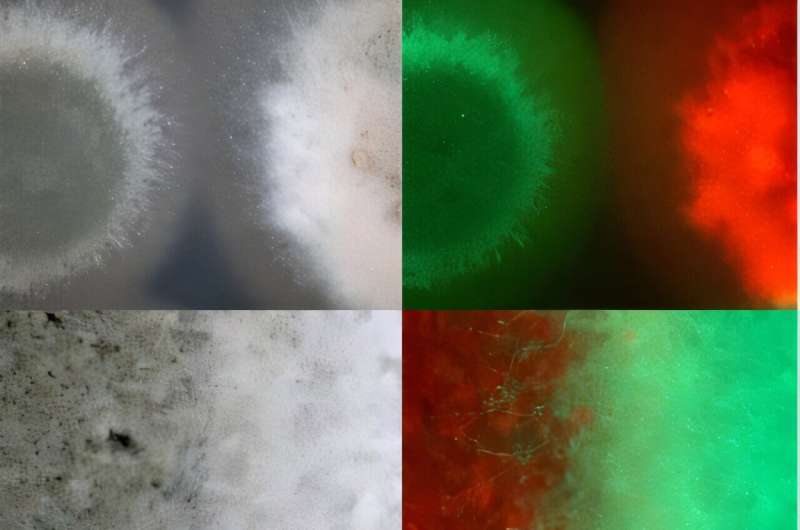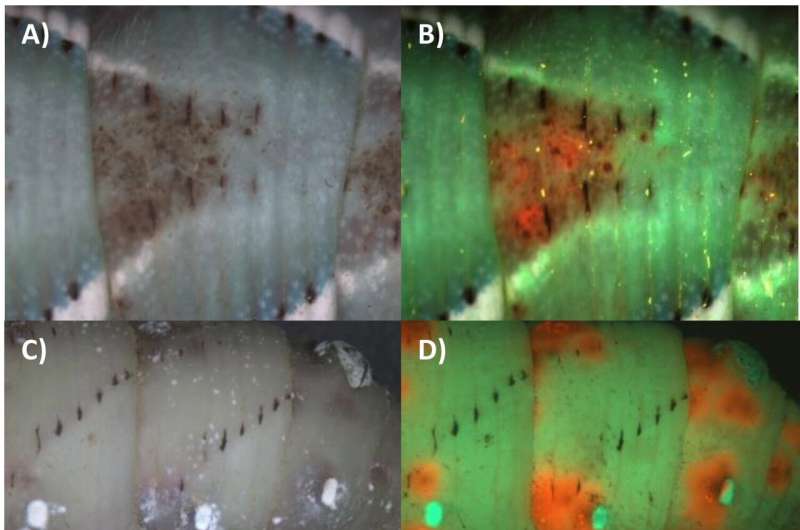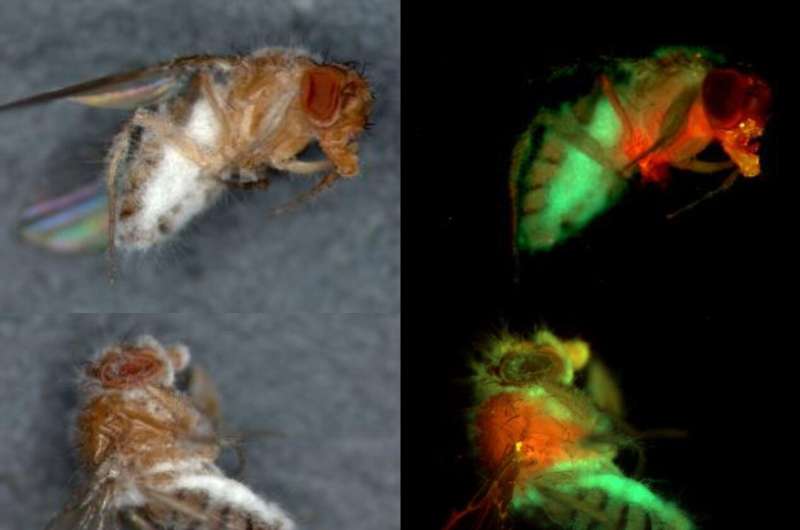This article has been reviewed according to Science X's editorial process and policies. Editors have highlighted the following attributes while ensuring the content's credibility:
fact-checked
peer-reviewed publication
trusted source
proofread
Insect-killing fungi find unexpected harmony in war

University of Maryland entomologists have uncovered a unique relationship between two species of fungi known for their ability to invade, parasitize and kill insects efficiently. Instead of violently competing for the spoils of war, the two fungi peacefully cooperate and share their victims.
The findings, published in the journal PLOS Pathogens, offer insight into some of the biggest evolutionary successes in nature's history, according to study co-authors Raymond St. Leger, a Distinguished University Professor of Entomology, and entomology Ph.D. candidate Huiyu Sheng.
"It's not survival of the fittest in the way we often think of. Sometimes, it's the survival of those who can just get along," St. Leger explained. "Rather than wiping each other out, these fungi apparently evolved sophisticated ways of coexisting—and we are just beginning to understand that balance."
The study focused on two species of a fungal genus called Metarhizium, which can be found in soil around the world. Members of this fungal group protect plants from damaging abiotic stresses (such as drought or poor nutrients) and harmful insects.
"These microorganisms have been called keystone species because they play crucial roles in both plant health and natural insect population control," St. Leger said. "Our findings may help explain their extraordinary success in ecosystems worldwide."

Using advanced imaging techniques with fluorescent proteins that made the fungi glow red or green, the scientists observed how the fungi interacted when colonizing (infecting, spreading inside and eventually killing) insects. Rather than one strain dominating and excluding the other, the team found that the fungi neatly divided their territory among themselves—quite literally.
When colonizing pests, the two fungal strains showed an uncanny ability to split up their victims. One strain tacitly invaded the front segments of an insect host, while the other colonized the back segments, with the two invaded territories distinctly separated by a remarkably sharp dividing line between them. This pattern held true whether the chosen victim was a large caterpillar weighing ten grams or a tiny fly weighing less than a single milligram.
"The sharpness of the delineation between where one fungus starts and the other ends looks quite bizarre," St. Leger noted. "The borders separating the segments from each other are inexplicably clear."
So, why does this cooperation exist? The researchers believe each strain of fungus adapted its own unique specialties and niches over time, allowing them to partition limited resources.

"It's becoming clear that sometimes the key to evolutionary success isn't outcompeting your rivals—it's learning to share," St. Leger said.
But just how these fungi orient themselves within their hosts and how they communicate their territorial division remain mysteries. The researchers hope to investigate the mechanisms responsible for these host-sharing strategies and open up new avenues of research on how they could be used to bolster both food security and Earth's biodiversity.
Understanding how different fungal species interact could help scientists and agriculturalists develop better biological pest control methods and strategies to promote plant growth. St. Leger notes that the fungi already show incredible promise in protecting plants from mercury poisoning, enhancing crop growth and killing disease-spreading insects.
"These fungi have shown that they are very adaptable," he said. "They've been doing this for a very long period of time and have thus evolved an arsenal of novel, sophisticated and subtle tricks. They are also very easy to genetically engineer, so their applications are limited only by your imagination."
More information: Huiyu Sheng et al, Metarhizium fight club: Within-host competitive exclusion and resource partitioning, PLOS Pathogens (2024). DOI: 10.1371/journal.ppat.1012639
Journal information: PLoS Pathogens
Provided by University of Maryland

















